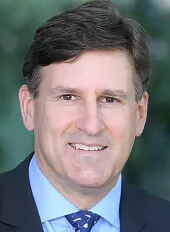Mega Doctor News
By Children’s Hospital Los Angeles
Newswise – Children’s Hospital Los Angeles is home to one of the country’s busiest and most experienced pediatric gait labs in the country. The team evaluates more than 400 children each year, using an advanced, 10-camera motion-capture system to obtain 3D images of how a child walks and moves.

That analysis plays a critical role in determining the most effective treatments for children with walking issues, including those with cerebral palsy, says Robert M. Kay, MD, Chief of Orthopedic Surgery and Director of the Jackie and Gene Autry Orthopedic Center at CHLA.
Dr. Kay has been leading the John C. Wilson Jr. Motion and Sports Analysis Lab since he arrived at CHLA in 1997. Today, the lab is internationally renowned and is the only fully accredited pediatric gait lab in Southern California—and one of just two-dozen in the country.
Recently, Dr. Kay shared what he’s learned from nearly 30 years of gait analysis in a keynote address June 20 at the 2025 Gait and Clinical Movement Analysis Society conference. Here are five takeaways from his talk: “Walk This Way: Lessons Learned From the Gait Lab.”
1. A gait study changes surgical plans nearly 90% of the time.
One of the first studies Dr. Kay’s team published looked at the first 100 children to have a gait study at CHLA. Out of those, 70 patients needed surgery. The team found that the gait study had changed the surgical plan for 62 of those patients—nearly 90%.
And the changes were not subtle. Although most surgeons ended up doing the same number of procedures, 40% of those surgeries were different than what they had originally anticipated.
“It was a very large difference in the treatment children received after a gait study,” Dr. Kay says. “Gait analysis has allowed us to be much more precise in treating children’s gait problems.”
2. Gait analysis halves the rate of reoperations.
Gait analysis can also improve a child’s long-term outcomes. In one study, the team analyzed five-year postoperative outcomes in 350 children who had had surgery for walking problems at CHLA.
The children who had undergone a gait study prior to their surgery had half the rate of reoperations than children who had not had a gait study.
3. Gait analysis can change standards of care.
Dr. Kay cites the rectus femoris transfer procedure, which is used to improve stiff knee gait in children with cerebral palsy.
CHLA was the first lab to stratify patient outcomes after that surgery based on the child’s gross motor function classification system (GMFCS) level. Based on gait lab data, the study showed that children who were most ambulatory—at GMFCS levels I and II—had the best results. Those at Level IV had poor outcomes.
“That gait lab data was essential in helping us significantly refine the indications for that surgery,” Dr. Kay says.
In another study, the team found that in some children “guided growth” surgery can be as effective as osteotomies in correcting bony knee deformities. What’s more, the data showed that kids did not need a full two years of growth left to benefit from it, opening up this less-invasive procedure to more children.
“The treatment aspect of the gait lab is on a patient-by-patient basis, but what we learn in the lab goes far beyond that,” he notes. “It can change the way millions of children are treated around the world.”
4. Gait studies are cost-effective.
One prevailing myth about clinical gait analysis is that it’s expensive. But Dr. Kay notes that insurance companies pay about the same for a gait lab study as for a pair of ankle foot orthoses (AFOs), or leg braces—a routine item for children with cerebral palsy.
“No one questions the cost of AFOs, which are sometimes replaced every year,” he says. “But a gait lab exam can dramatically alter a child’s short- and long-term outcomes. When you’re talking about decreasing the rate of reoperation by 50% in five years, I think most people would say that’s a worthwhile investment.”
5. Teamwork is the key to success.
Dr. Kay credits the achievements of CHLA’s Motion and Sports Analysis Lab to the deep expertise and dedication of its multidisciplinary team. That team includes not only physicians and researchers, but also a biomedical engineer, physical therapists, and physical therapy assistants, along with support staff who make sure the process runs smoothly.
“We each have a different knowledge base and skill set, and we leverage each other’s strengths,” he says. “Gait analysis is not a one-person effort. It takes a dedicated, highly skilled team to achieve the best results for each child.”













